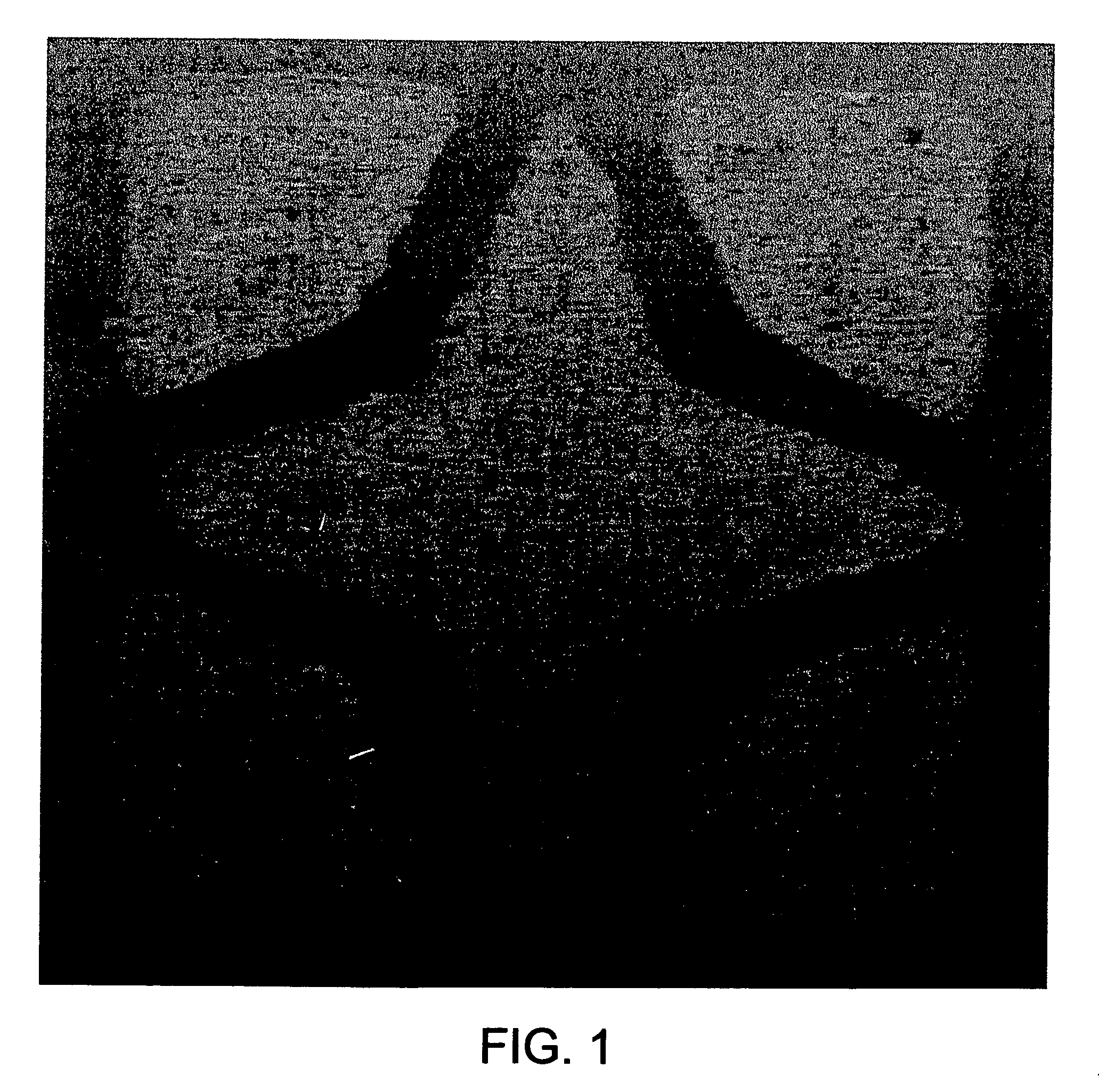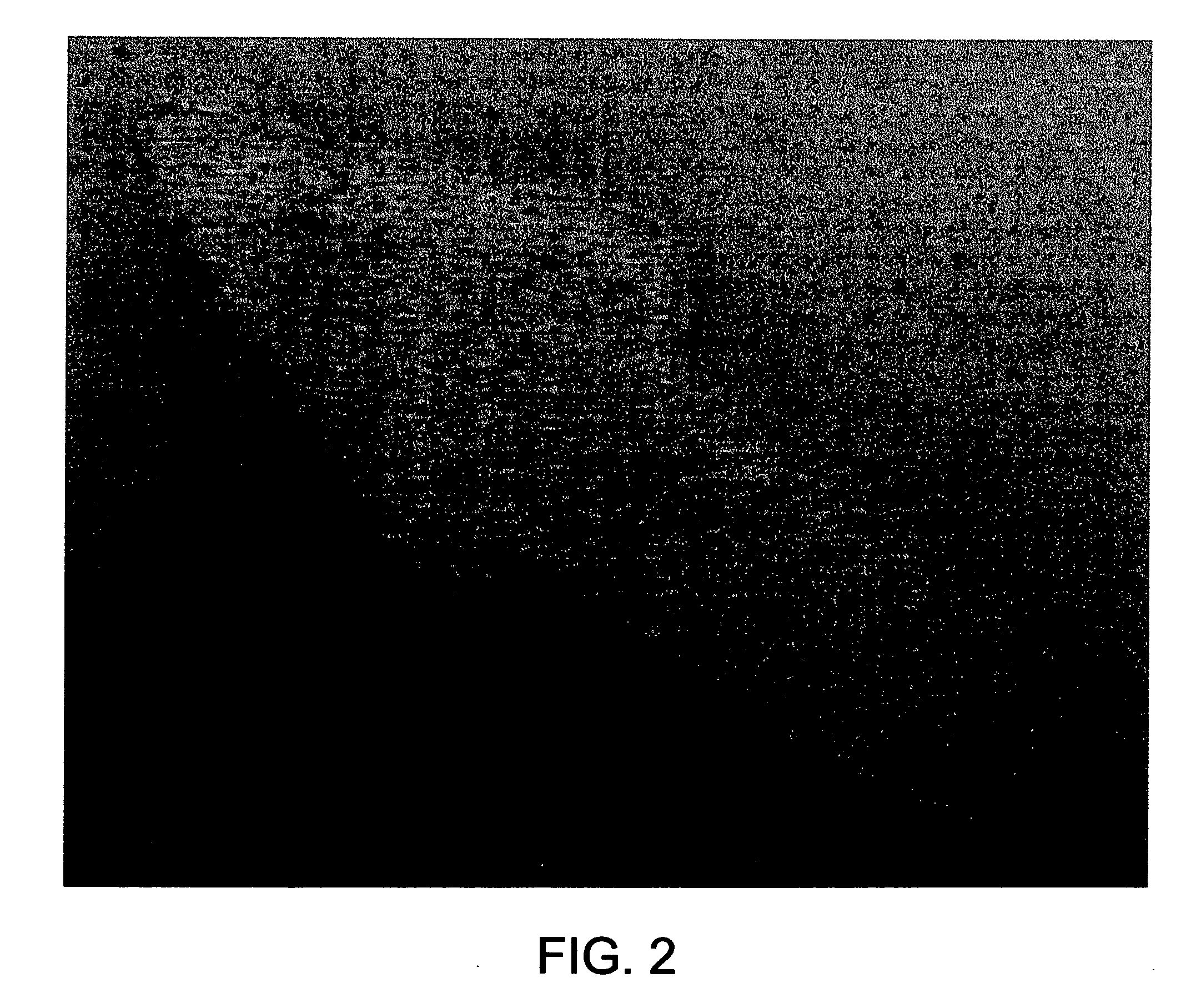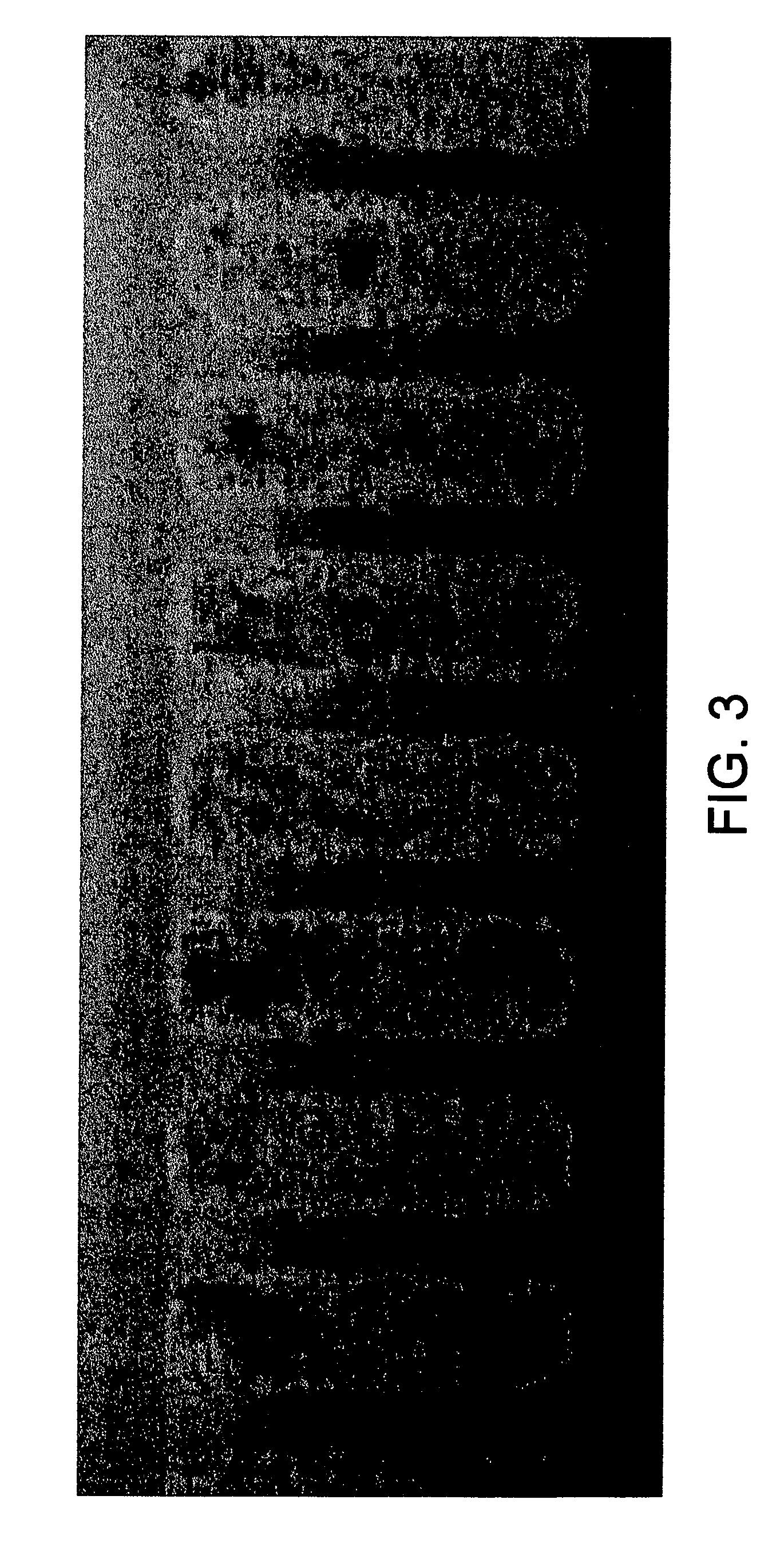UV curable catalyst compositions
a technology of curable catalysts and compositions, applied in the direction of organic compound/hydride/coordination complex catalysts, physical/chemical process catalysts, chemical coatings, etc., to achieve the effect of rapid throughput and increase the effective area of catalysts
- Summary
- Abstract
- Description
- Claims
- Application Information
AI Technical Summary
Benefits of technology
Problems solved by technology
Method used
Image
Examples
example 2
A UV Catalytic Primer of Hydrous Oxide of Silver
[0074] 0.045 gm of the stock hydrated silver oxide from Example 1 is added to an aqueous composition containing 2.5 gm of barium sulfate (BaSO4) having an average particle size of 300 nm, 0.15 gm of iron oxide (Fe2O3) having an average particle size of 550 nm, 0.5 gm di(ethylene glycol) butyl ether, 1 gm of diphenyl iodonium chloride, and 9 gm of water. The solids are dispersed in the water using high-shear agitation. 0.8 gm of an aqueous-dispersed polyurethane resin containing hydrophobic segments in its backbone and 0.01 gm of an alkoxysilane cross-linker are added to the slurry using low-shear agitation. The ratio of inert filler to metal catalyst is 65 to 1.
example 3
A UV Catalytic Primer of Hydrous Oxide of Silver
[0075] 0.045 gm of the stock hydrated silver oxide from Example 1 is added to an aqueous composition containing 3.6 gm of barium sulfate (BaSO4) having an average particle size of 300 nm, 0.25 gm of iron oxide (Fe2O3) having an average particle size of 550 nm, 0.5 gm di(ethylene glycol) butyl ether, 0.5 gm of diphenyl iodonium hexafluorophosphate, and 6 gm of water. The solids are dispersed in the water using high-shear agitation. 0.8 gm of an aqueous-dispersed polyurethane resin containing hydrophobic segments in its backbone is added to the slurry using low-shear agitation. The ratio of inert filler to metal catalyst is 94 to 1.
example 4
A UV Catalytic Primer of Hydrous Oxide of Silver
[0076] 0.043 gm of the stock hydrated silver oxide from Example 1 is added to an aqueous composition containing 4.5 gm of iron oxide (Fe2O3) having an average particle size of 550 nm, 0.5 gm di(ethylene glycol) butyl ether, 0.5 gm of n-phenyl glycine, and 6 gm of water. The solids are dispersed in the water using high-shear agitation. 0.8 gm of an aqueous-dispersed polyurethane resin containing hydrophobic segments in its backbone and 0.01 gm of an alkoxysilane cross-linker is added to the slurry using low-shear agitation. The ratio of inert filler to metal catalyst is 114 to 1.
PUM
| Property | Measurement | Unit |
|---|---|---|
| particle sizes | aaaaa | aaaaa |
| frequency | aaaaa | aaaaa |
| frequency | aaaaa | aaaaa |
Abstract
Description
Claims
Application Information
 Login to View More
Login to View More - R&D
- Intellectual Property
- Life Sciences
- Materials
- Tech Scout
- Unparalleled Data Quality
- Higher Quality Content
- 60% Fewer Hallucinations
Browse by: Latest US Patents, China's latest patents, Technical Efficacy Thesaurus, Application Domain, Technology Topic, Popular Technical Reports.
© 2025 PatSnap. All rights reserved.Legal|Privacy policy|Modern Slavery Act Transparency Statement|Sitemap|About US| Contact US: help@patsnap.com



